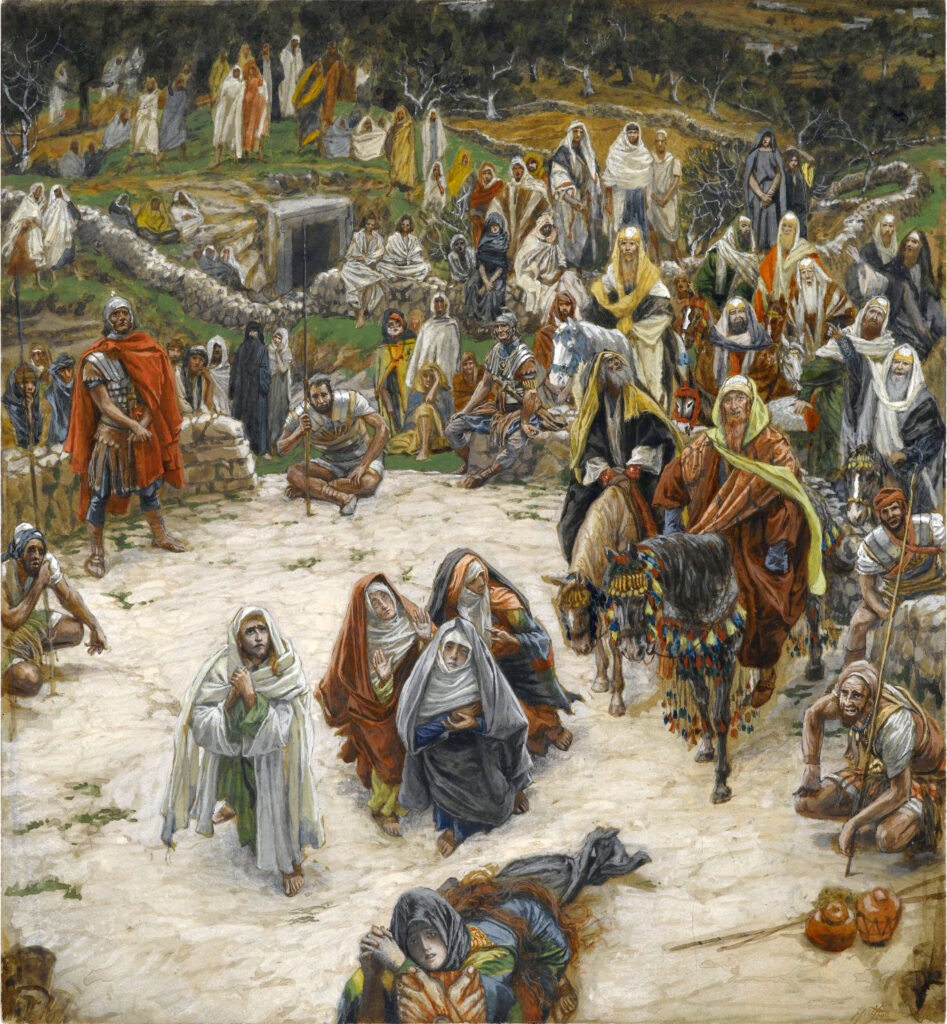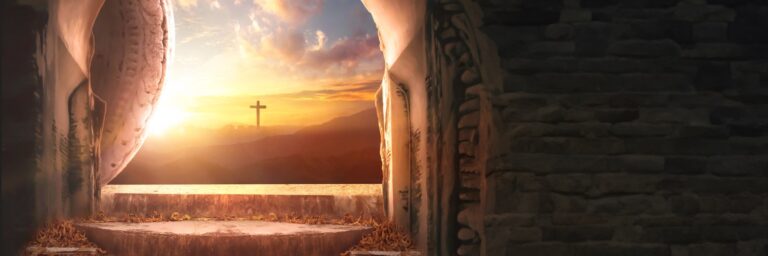
WHAT OUR SAVIOUR SAW FROM THE CROSS

A significant part of our worship on Good Friday is the veneration of the cross. The cross is solemnly processed through the congregation, then we are invited to express our devotion to it. The cross may be the most recognizable symbol of Christianity whether it be as a simple cross or a crucifix. We turn the symbol of the cross into a worship ritual when we make the sign of the cross. The symbol of holiness sanctifies our homes, classrooms and churches. It directs us to the centre of our faith, Jesus Christ. Let’s contemplate the different ways the cross points to sacred reality.
The cross is our portal to that day nearly 2,000 years ago in Jerusalem. We can imagine ourselves at the foot of the cross… (pause to reflect):
Who are you standing with?
What do you see?
What do you hear?
What do you feel?
What do you do?
What do you want to tell people about this scene?
Now imagine the view from the cross as artist James Tissot did in his artwork “What Our Saviour Saw from the Cross” and ask these same questions.
The cross joins the vertical and the horizontal. The heavenward gaze is the original visio divina, contemplating God with sacred eyes. The arms of Christ reaching out to the thieves beside him, to the people of Jerusalem, to our world, to our cosmos expressing love of neighbour. The cross is the living symbol of the great commandment (Matthew 22:36-40).
The cross embodies that deep sacred love that joins us together. It resembles a plus-sign from mathematics that joins numbers together to create something greater. That’s what love does. That’s what Christ does.
The original cross is made from a tree. Jesus is nailed to creation and the fate of our earth is tied to the fate of Jesus. Creation is being crucified today as are our hopes for ecological healing. The wood of the cross is the wood of a deeply wounded creation.
The cross can be dangerous; it can be seen as a sword. But in a positive sense the cross as sword can mean that we cut away those parts of our lives that lead us away from beauty, truth and goodness.
The cross is a map of an intersection. It is an invitation to change our direction toward Christ. North, south, east or west – it doesn’t matter as long as we travel toward Christ. The fact that we use Christ as our guide is the essential point. The cross is a map of our route home.
The crucifixion is played out in our daily lives. As I write, I’m in a hospital room with my 91-year-old mother-in-law who is suffering from a blood sepsis along with her late-stage Alzheimer’s. Her suffering is joined with that of Christ on the cross. Our suffering at the foot of the bed is accompanied by Our Blessed Mother’s suffering at the foot of the Cross.
This Good Friday we meditate on the crosses in our Church, in our homes and around our necks. They are paths to a deeper peace, a deeper relationship with Christ.
Les Miller is a husband, dad, grandfather and catechist. He has served the Catholic education community for 40 years as teacher, chaplaincy team leader, Department Head. AQ Instructor, textbook writer, and Religious Education and Family Life Consultant. Les authored the 25 Questions Series, Words for the Journey and award-winners Catholic Teacher’s Companion and Northern Light. Currently, he is an instructor and advisor with the Archdiocese of Toronto’s online Catechist formation program and lead contributor to the St. Monica Institute’s series on praying with art, Abide in Beauty.


Thank you for challenging us to think of where we stand in relation to the cross, what the cross can mean in today’s world and in our own world. You’ve given us food for thought, for our imagination, and for ways to grow spiritually. Thank you, Les Miller.